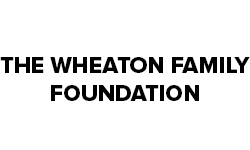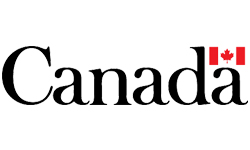GRADE 6 CITIZENSHIP STUDIES SELF, COMMUNITY, AND PLACE
Part A: Curricular Connections and Background
BROAD AREA OF CITIZENSHIP
This area of citizenship focuses on the student using critical thinking skills in order to better understand, the relationship between geography, resources, culture and historical events.
OVERVIEW AND DESIRED RESULTS OF CITIZENSHIP STUDY
Studies in this area of Citizenship expand student’s sense of identity with respect to local, regional, provincial, national, and global diversities. Students specifically compare the experiences of Canada to those of countries bordering the Atlantic Ocean. Students will begin to explore the relationship that citizens have with the environment and examine the impact of cultural and personal beliefs on how the environment is used. Students will examine environmental and economic decisions on a local, national, and global level and consider the disparity between cultures and countries. Students will extend their modeling of respect for self and others to consider the impact of citizenship decisions on the environment.
ENDURING UNDERSTANDINGS OF CITIZENSHIP STUDY
History and current events are understood through diverse historical perspectives.
- Democracy requires discussion and consideration of alternate points of view in order to find a balance between individual perspectives.
- Citizens value the needs of the collective common good and consider how their actions impact the collective well-being.
- Canadian multi-cultural policies challenge citizenship tenets and require consideration of multiple perspectives.
- Canada’s history includes First Nations, Métis, and Inuit governance and perspectives and each have contributed to Canadian identity.
- Decision-making is a complex process with far-reaching impacts.
- Engaged citizens strive to be knowledgeable, uphold their rights, and act on their responsibilities.
Inferences to make:
- Empathy requires understanding and appreciation of another’s perspective.
- Citizens value the need of the collective common good and consider how their actions impact the collective well-being.
- Enduring understandings and questions stimulate thinking, guide the inquiry and are linked to outcomes.
- They point to the “big ideas” in the area of inquiry and should be considered and reconsidered as the inquiry progresses.
- Answers to these questions form the evidence of learning at the end of study.
KNOWLEDGE AND SKILL DEVELOPMENT
- Expand their sense of identity with respect to local, regional, provincial, national, and global diversities.
- Exhibit an awareness and understanding of natural environmental issues on a local, national, and global level.
- Model being active and responsible citizens, including respect for self, others, and the environment.
Students will continue to develop skills for:
- Examining issues from a variety of perspectives.
- Looking for alternate points of view.
Students will use their independent learning to:
- Develop skills for treating self and others with respect.
- Demonstrate empathy in social situations.
- Continually reassess where they belong (changing contexts/roles and expectations) i.e. school, family, community.
- Reflect upon the impact of their choices.
ESSENTIAL QUESTIONS
- What is government’s responsibility to ensure and maintain common good?
- What is the appropriate citizenship response to the marginalization witnessed daily?
- What is the relationship between the natural environment and the development of society?
- How much control do you have over the impact of your decisions/actions?
- What responsibility do you have to balance personal needs with the community’s (global) needs?
- What is the power and responsibility of the individual to make a difference in the world?
- What role does empathy play in citizenship?
CURRICULUM OUTCOMES AND INDICATORS
(Sask. Curriculum / Student Friendly)
IN6.1
Evaluate and represent personal beliefs and values by determining how culture and place influence them. / Examine the influence of culture and place on individual beliefs and values.
Indicators:
- Identify personal roles in, and responsibilities toward, the family and local community.
- Compare and contrast family and community roles and responsibilities of young people in Canada, including First Nations, Inuit, and Métis families, with the roles and responsibilities of age-equivalent youth in a selection of countries bordering the Atlantic Ocean (e.g., conduct interviews with local youth and elders, use technology to link with youth in provincial, territorial, national and global communities).
- Give examples of the artistic expression of culture in Canada, including First Nations, Inuit, and Métis peoples, and in a selection of countries bordering the Atlantic Ocean, and draw conclusions about the beliefs and values of the inhabitants in those regions.
- Assess the current and historical approaches to cultural diversity used in Canada and in a selection of countries bordering the Atlantic Ocean, including consideration of segregation, assimilation, accommodation, and pluralism.
- Plan, conduct, and evaluate an inquiry to illustrate how culture and place influence the beliefs and values of the local community.
- Examine the beliefs and values of individuals discussed in case studies or of characters in literature highlighting youth, and represent the influential factors on the characters or subjects. Assess how these beliefs and values compare with those of local youth.
IN 6.2
Examine the social and cultural diversity that exists in the world, as exemplified in Canada and a selection of countries bordering the Atlantic Ocean. / Compare social and cultural aspects of their lives with countries bordering the Atlantic.
Indicators:
- Compare and represent the kinship patterns, cultural traditions, and traditional worldviews of Saskatchewan First Nations, Métis, and Inuit people, and of other cultural groups residing in a selection of countries bordering the Atlantic Ocean.
- Research ways in which cultural traditions, celebrations, art, music, literature, drama, and sport have influenced intercultural understanding.
- Investigate the contributions of First Nations, Métis, and Inuit people in Canada and indigenous peoples in a selection of countries bordering the Atlantic Ocean to local, provincial, national and global communities in various areas such as politics, business, health, education, sport, music, literature, art, dance, and architecture.
- Research and represent the historical and contemporary contributions to local communities by a variety of cultural groupings representative of Saskatchewan.
- Compare and contrast social and cultural diversity in Canada with that of a selection of countries bordering the Atlantic Ocean, and assess the significance of cultural diversity.
DR 6.1
Analyze the impact of the diversity of natural environments on the ways of life in Canada and a selection of countries bordering the Atlantic Ocean. / Analyze how the natural environment impacts their lives and compare their situation to countries bordering the Atlantic.
Indicators:
- Make generalizations about the effects of climate and vegetation in a local area on the historical development of people in the selected area.
- Describe the relationship between the climate and vegetation zones and the lifestyles (e.g., modes of travel, home and building construction, modes of dress, population health, types of sport, recreation and leisure activities, economic activity) of people in Canada and in a selection of countries bordering the Atlantic Ocean.
- Investigate ways in which natural environments are reflected in the artistic expressions (music, dance, painting, sculpture, architecture) in Canada and in a selection of countries bordering the Atlantic Ocean.
- Investigate the importance of place to the development of first languages and cultures.
DR 6.2
Analyze ways in which the land affects human settlement patterns and social organization, and ways in which human habitation affects land. / Analyze where and how people choose to live.
Indicators:
- Identify, on a map or globe, major cities, landforms, and bodies of water in Canada and a selection of countries bordering the Atlantic Ocean.
- Propose explanations for population distributions, densities, and growth rates in a selection of countries bordering the Atlantic Ocean, and compare this to population distributions, densities, and growth rates in Canada.
- Identify the historical and contemporary factors that influence the migration of people (e.g., environmental, economic, and political factors), and research examples from a selection of countries bordering the Atlantic Ocean.
Conduct an inquiry into the nature of urbanization and examine the impact of urbanization on youth, including indigenous youth, in Canada and in a selection of countries bordering the Atlantic Ocean.
© 2024 Concentus Citizenship Education Foundation Inc. All Rights Reserved.









